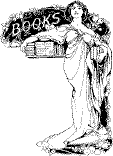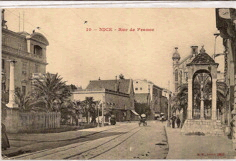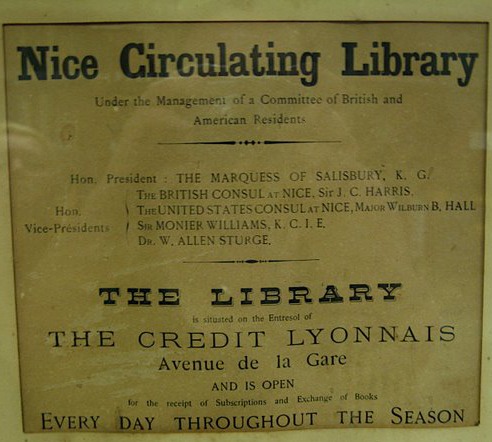
English American Library - Nice - French Riviera
|
 |
ENGLISH – AMERICAN LIBRARY OF NICE, FRANCE
In the early 1800’s English visitors arrived in growing numbers at Nice and other locations along the coast, following the advice of the writer Tobias Smollett concerning fresh sea air and sea baths. This influx necessitated the creation of several small English speaking businesses in Nice, as well as a Church and eventually, a small library.
In those days travel was difficult and entire families along with their domestic staff, travelled across the Channel and then by road to the south of France for the winter months. There were other reasons for coming than health benefits and the climate: the traditional Grand Tour, an important element in finishing the education of those able to afford it, passed through France and the Kingdom of Savoy (which included Nice until 1860), before passing on to Italy and Greece. The relative political stability provided by the House of Savoy and improved trade relations, facilitated the promotion of the Nice region.
These English families had children, tutors and of course brought books in their voluminous carriages. The locals were fiercely Catholic, but the creation of an unpretentious Anglican chapel – little more than a one story building behind a high wall - was tolerated. However, an Anglican Parish was not created until after the Napoleonic Wars had ended and in 1820 this Parish was placed under the jurisdiction of the Bishop of London. Between 1860 and 1862 the present neo-Gothic Holy Trinity Church was built by the English architect Thomas Smith. Later the Anglo-Niçois architect Aaron Messiah added a Vicarage to the east of the Church and a Church Hall and Library to the south. Sadly, this building was demolished in 1959 to give space to a large apartment building, the Gibraltar.
The Library began as an exchange of books between families who spent the winters in Nice in the 1820s. Their children’s tutors exchanged books on such as geography, history, biography, maths and religion. The English Church itself had a small collection of mainly religious works. This gradually expanded and by 1852 the first organised Library, complete with Librarian was up an running. Notices can still be seen in the present Library dating from that time, which stipulate that the volumes are for the use of the Congregation and “must not be lent to others”. According to the Library Rules one family was allowed the use of four volumes at a time, for a maximum of fifteen days. Evidently strict attention was paid to material entering the Library as one notice states that “…presents of Books are gratefully received, (subject to the approbation of the Chaplain).”
In tandem with the Church Library there existed a small circulating library which was well frequented as from 1840 and had its base at various locations, including the Credit Lyonnais Bank (then in Avenue de la Gare, which later became Avenue Jean Medecin) and Rue de Congres. Eventually the Church Library merged with the Nice Circulating Library in the 1880’s, to form the English Library and by then several thousand books were listed in their publicity.
Nice at that time had several English speaking newspapers, ( Nice Times, Nice and Monte- Carlo News) grocery stores, tailors and ladies haberdashers, restaurants and clubs that catered for the foreign winter residents.
The Library had several official Patrons: The English Consul for Nice, the Chaplain of Holy Trinity and ( curiously! ) the local Director of American Express. In addition a Council of 12 gentlemen was instituted to rule on Library matters.
In the early 1900’s the regular visits of Queen Victoria and other members of the British Royal Family to Nice, made the destination very popular. The book collection grew and the admissions rules for the library and the intake of books became more relaxed.
During the First and Second World Wars the Library faced serious difficulties and never more so than at the end of 1943 when the Library (officially closed, though working as usual), was visited by a German official of - unfortunately – excellent taste, who picked most of our Tauschnitz editions for his private library. Since the local English speaking Free Masons and another undercover group also had regular meetings in the Library, the order was now firm, it had to close.
An incredible act followed. Each of the Library members started carrying home books – as many as they could manage. The Swiss consul somehow managed to get a small van and crates of books were sent off to safety. The Library was indeed closed, but not finished.
Soon after the arrival of the American 6th Fleet in Villefranche in 1944, the Library re-opened as the English-American Library and books began to be returned. Mrs Helen Campbell remembers that even in the early 60’s she received parcels from Lyon from someone sending back his portion. The new Church Hall and Library building was inaugurated in the early 1960s and since then the collection has continued to grow. The Library agreed to move out of the original buildings in exchange for a new place in the old hall where it is now. We have close to 30 000 volumes ( spring 2009) and we receive donations of books every week.
More recent Patrons of the English-American Library have been distinguished writers; such as W. Somerset Maugham, Graham Greene O.M. and the present Patron, Dame Nadine Gordimer.
The English winter residents are no longer in the thousands, but the permanent English- speaking residents still come to the Library to get their books. Our Fiction is the most popular section; but we have a large Biography and History collections, (especially American history), as well as Travel, Diaries and Letters and the two World Wars. Books on a variety of subjects from Science to Poetry, Theatre, Nature, Cookery and True Crime all find a home here. In a glass cabinet at the very far end of the Library some of the old early XIXth century collection still exists, a remnant of a more glamorous age.
Today the Library is housed in the basement of the Centenary Church Hall at 12b Rue de France, about 10 metres closer to the Church than it was originally. Although we are still on the grounds of Holy Trinity, we are organised separately from the Church and the Library Committee is entirely independent.
Our members mostly join on a yearly membership but some tourists and short term visitors take out weekly subscriptions. The newspaper desk is always full of papers and magazines and the ‘ New Arrivals ‘ shelves are always full. Our Library is still run by a Committee of twelve and nine voluntary unpaid Librarians keep it open every day from 10-11 a.m. and 3-5 p.m., except Sunday and Monday.
